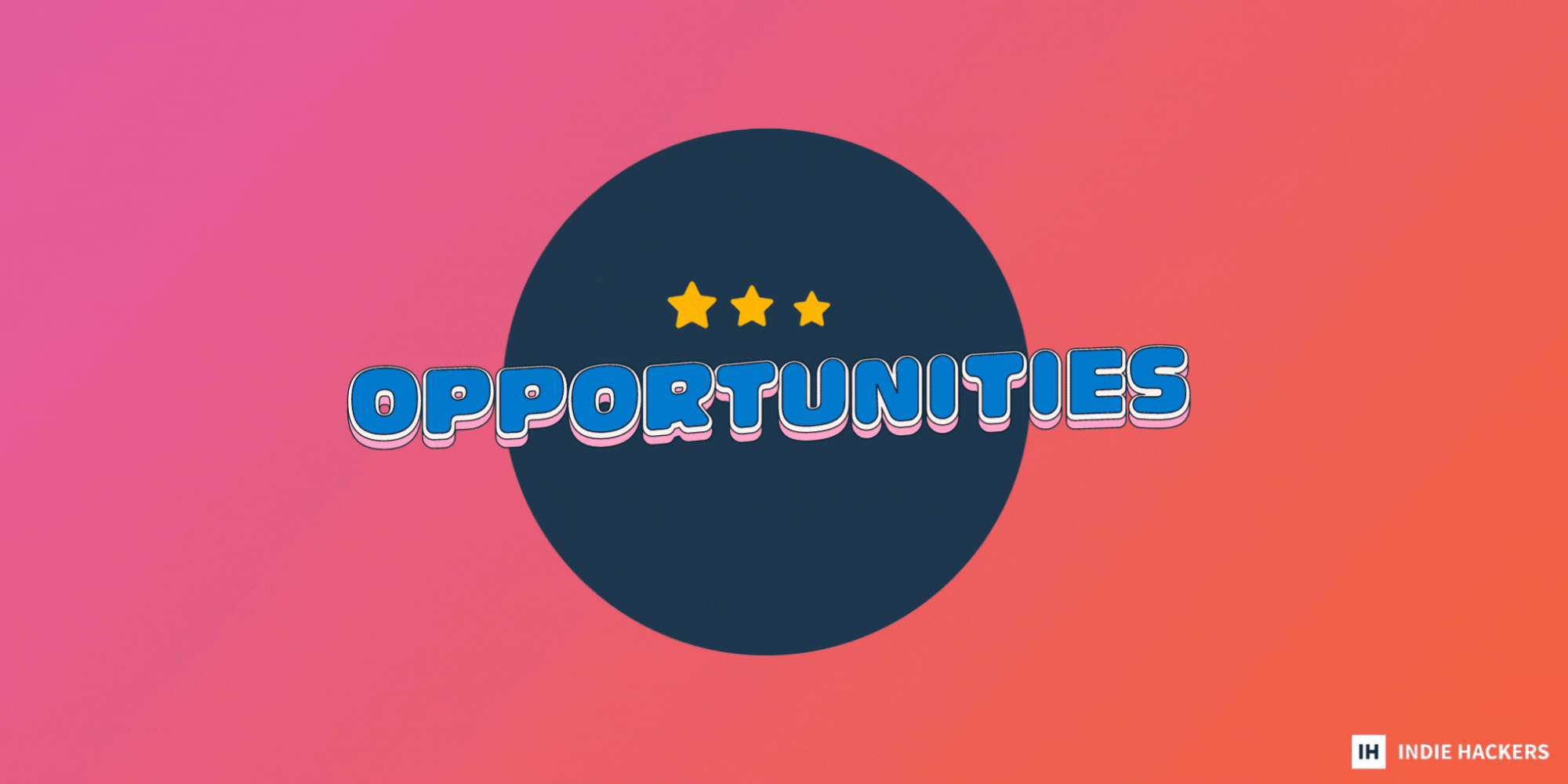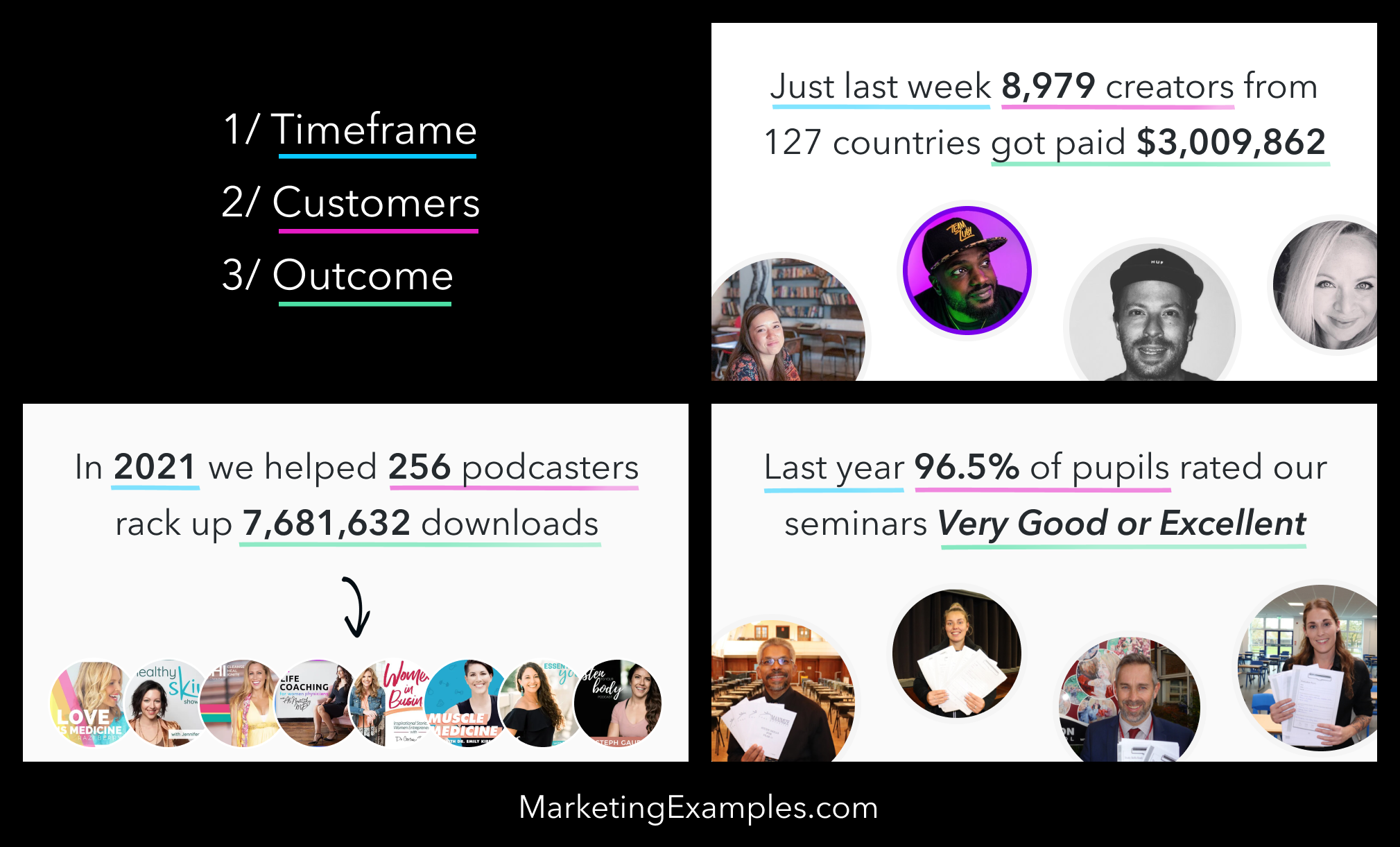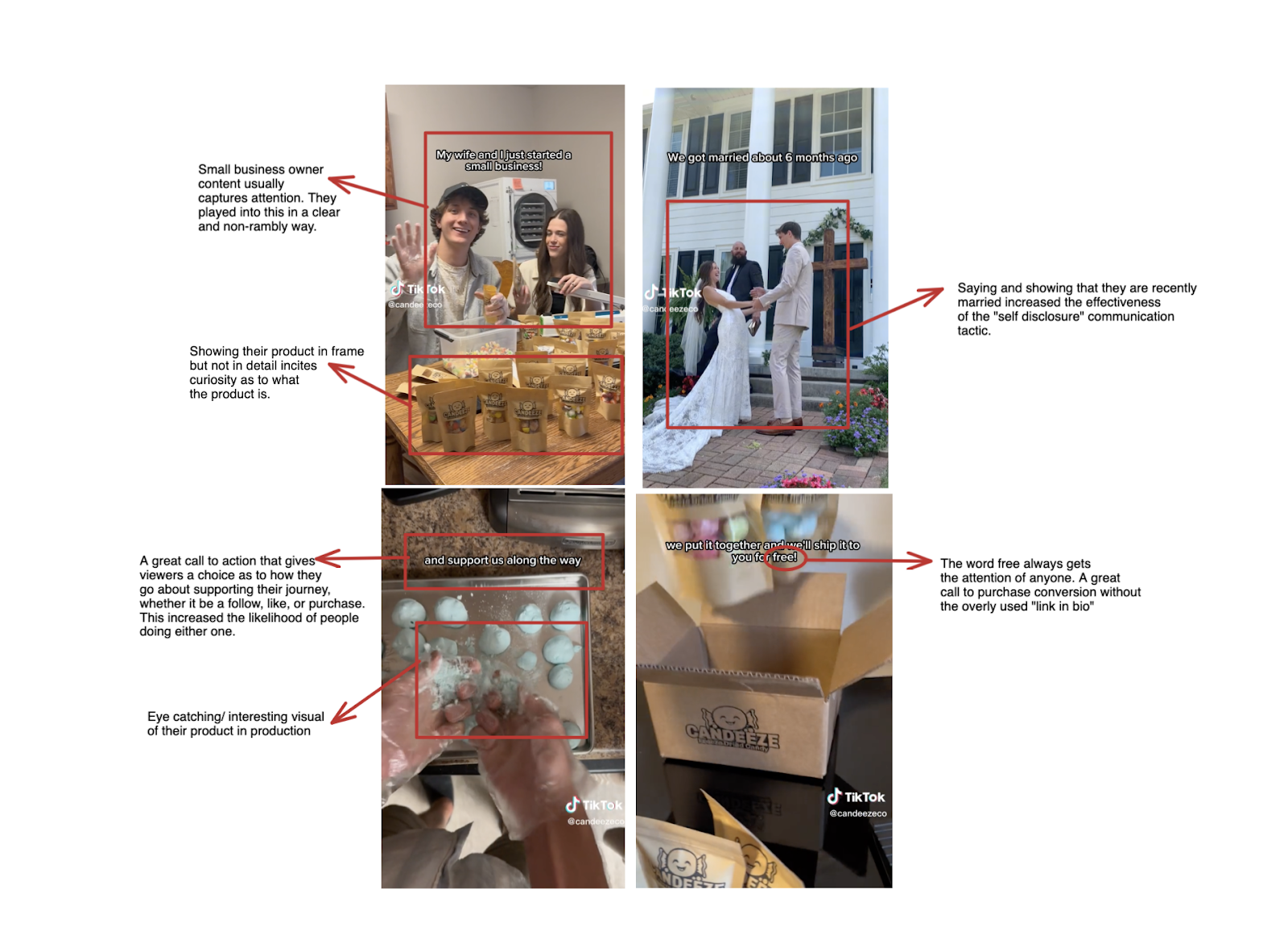If you leverage it right, social proof can be one of your most powerful tools: - **Social proof builds trust, increases conversions, and a host** of other things. Here are the best social proof opportunities for founders, including how to collect it,
If you leverage it right, social proof can be one of your most powerful tools:
-
Social proof builds trust, increases conversions, and a host of other things. Here are the best social proof opportunities for founders, including how to collect it, and best practices for using it.
-
If you're looking for strategies to help your launch go viral on TikTok, look no further. The guide below breaks down the elements of a viral product launch, including the psychology behind it, to help you skyrocket your next campaign!
-
Founder Bhanu Teja Pachipulusu hit $50,000 in annual revenue in 9.5 months with Feather, his Notion-based blogging platform. In his latest update, he shares what contributed most to his growth, and what he would do differently in hindsight.
Want to share something with nearly 115,000 indie hackers? Submit a section for us to include in a future newsletter. —Channing
💬 Best Social Proof Opportunities for Indie Hackers

by James Fleischmann
We are social creatures, and that's why social proof is so important. Nothing is more convincing! Social proof builds trust, increases conversions, explains your product better than you can, and even helps with SEO.
Here's what I've learned about the top social proof opportunities, plus low-hanging fruit for indie hackers!
Forms of social proof
Keep these opportunities in mind when designing your landing pages and workflows:
-
Testimonials: This is, of course, the big one. Sales page conversions increase by as much as 34% with testimonials, according to one study. How do you get them? Ask for them. Send surveys. Incentivize honest ones. Trigger emails that send when users have some kind of win with your product. Do some social listening to find mentions that can be used as testimonials, and don't forget to engage with them.
-
Case studies and customer success stories: Work with companies that have had a lot of success with your product to put together a case study. You'll need to understand their goals, their results, and how this impacted their business as a whole. If you're B2B, many of your customers will be open to this, since they will get some exposure.
-
Product reviews: These don't really apply to SaaS companies, but for those of you who are selling in marketplaces, or have infoproducts, it's worth setting up your website to allow for reviews. After all, 93% of online consumers look at product reviews before buying. Other than having the option on your site and marketplace, you can email after a purchase to request reviews.
-
Offsite reviews: Here's where reviews matter for SaaS companies. Sign up with review sites like G2 and Trustpilot, and send users there when asking them to review your product. You can also add their logo and rating on your site.
-
Success data: Keep track of how the product is helping your customers as a whole, and present key data points.
-
Real-time status notifications: You've probably seen sites where things like purchases and signups pop up as little notifications. Depending on the nature of your product, they can have an impact.
-
Dynamic headlines and subtext: For instance, include "X companies signed up in the last seven days alone" or "Join X others who are benefiting from my product" next to the signup button.
-
Engagement count: If you've got content that gets some decent engagement, consider including engagement statistics, like the number of shares and comments.
-
Customer logos: If you're B2B, add customer logos to your site. They don't need to be huge names. When you're first starting out, any logos at all will help. Ask customers for permission to use their logos on your site.
-
Media mentions: Include the logos of any press organizations that cover your product.
-
Features: Try to get featured on podcasts, in articles, etc. Nothing tells people you're an expert more than getting interviewed. When it happens, amplify it on your socials. And, if it's a big name, put their logo on your landing page.
-
Influencers, industry experts, and ambassadors: Give your product to them in exchange for a testimonial or share, if they like it. Micro-influencers are a little more realistic for most of us. Consider setting them up as ambassadors.
-
Building in public: Many indie hackers are already doing this!
-
Affiliates: Set up an affiliate program where folks get a small kickback for talking about your product.
-
Social media following and engagement: While you don't always see this mentioned in the social proof conversation, your following is important, as social media influences 71% of buying decisions. Include links to your socials in your email signature, on your website, etc., and encourage people to like and follow.
-
Open companies: Once you're up and running, having an open company can provide excellent social proof (number of users, revenue, etc.).
-
Pricing tags: On your pricing page, note which tier is the most popular, which implies that you're selling a lot.
-
Bundling with other brands: Collaborating or integrating with a popular brand can lend you some of its credibility. Partner with a company that has a complementary product, and sell your products together at a discount.
Displaying your social proof
-
Website: Add it to your homepage, landing pages, pricing pages, checkout flow, onboarding flow, etc. Make sure to include social proof above the fold, and where decisions will be made (i.e., near the "Sign up" button).
-
Social media posts and bios: Lots of indie hackers put their customer counts or revenue numbers in their bios.
-
Paid ads: If you're planning to run ads, include social proof. One study showed that ads with reviews increased clickthroughs by 10%.
-
Emails: Include social proof in the body of your drip campaigns, and in your email signature.
Social proof best practices
Here are a few ways to get the most out of your social proof:
-
Avoid negative social proof, like "These people missed out, and look what happened to them."
-
Don't add social proof until you've got enough of it.
-
Be specific. This helps your target customer to see themselves in the social proof.
-
Do things that don't scale. Reach out to X customers a day, personally asking for a review.
-
Run email campaigns for testimonials or offsite reviews.
-
Bold important words or phrases in your testimonials and case studies for easy skimming.
-
Include photos or logos in testimonials. It draws the eye and increases trust.
-
Include name, title, and company, where applicable.
-
Include a headline for testimonials so people know what they're looking at.
-
Use stories when possible, as these will stick in the minds of the people visiting your site. Try to encourage story-based testimonials, and include a narrative in your case studies.
-
Use Harry Dry's social proof formula:

Getting social proof when you're first starting out
Don't fake it. Don't buy it. Don't tell a friend to say something and then quote them. I know people who have done all three, and it's shady. I've even seen products specifically designed to serve fake data!
Will anybody know you did something shady? Probably not. But they might, and that will be bad. Oh, and it's also illegal, so...there's that.
The tried-and-true way to collect social proof is to personally reach out to your users, talk to them, and ask them for feedback. Then, ask if you can quote them. In addition to your current customers, reach out to people who might be interested, and give them access for free. Then, ask for social proof.
If you don't have users yet, focus on getting some. You don't need social proof to get users, but you do need users to get social proof.
Social proof tools
Social proof notifications:
Offsite reviews:
Testimonials, reviews, and embeds:
-
crowdy.ai: Video testimonials.
-
Yotpo: Includes social proof features like reviews, ratings, and referral programs.
-
Boast: Video, audio, and text testimonials.
-
Smash Balloon: Embed social media feeds in WordPress sites.
-
Thrive Ovation: Testimonial management.
How are you collecting social proof? Share your experience below!
Discuss this story.
📰 In the News

from the Growth Trends newsletter by Darko
💻 Google has launched a new Google Trends portal.
💝 Five emotional writing tactics to consider in content marketing.
🤫 Facebook's proprietary AI model has leaked to the public, in the first leak of its kind from a major tech firm.
❌ YouTube is removing its overlay ad format next month.
✨ What's the deal with virtual influencers?
Check out Growth Trends for more curated news items focused on user acquisition and new product ideas.
🚀 Dissecting a Viral TikTok Launch

from the Hustle Newsletter by Jorden Souza
Jorden Souza is a Trends member, and creator of The TikTok Lab. She wrote this piece specifically for Trends, sharing how to create a viral launch around your product!
Lucky launch
Candeeze is a small husband-and-wife-owned D2C brand that sells freeze-dried candy online.

*Sold out shortly after launch. Source: Candeeze
The company ran a unique launch strategy on TikTok recently, and its most viewed video got:
- 12.3K+ comments.
- 9.7K+ shares.
- 2.5M+ likes.
- 21M+ views.
It also gained Candeeze 280K followers in seven days.
There are many reasons why this launch was so successful, gaining the attention of millions. Let's dissect the viral founder video that kicked off the company's entire account.
Elements that made the video go viral
Founder videos are always a great way to kick off an account, or foster a deeper connection with a brand. After all, people would rather buy from other people than from a faceless company.
A big part of the campaign's success was that it tells a concise story that retains the viewer's attention. It also incorporates the following elements, making viewers want to keep watching:
-
The opening frame is clear, and relates to a topic that people usually like to support: Small businesses.
-
The second frame shows the founders' wedding, adding more to the story and stopping the scroll for viewers. When people find out that the owners recently got married, it kicks their support to a higher level in the emotional response part of the brain (the limbic system).
-
The third frame, where the candy machine is shown, adds an unconventional, unexpected layer to the story.
-
Then, they bring people behind the scenes to show how the candy is made, introducing an interesting element to the story: The freeze dryer.

*Source: TikTok
In the process, Candeeze continues stacking viral elements in the video:
-
The product itself is eye-catching, further holding the attention of viewers when they see their favorite candies being turned into puffs.
-
When the founder eats the freeze-dried Jolly Rancher, an element of autonomous sensory meridian response (ASMR) is added to the video.
-
Their enthusiasm over having received ten orders makes people want to support them further, since viewers feel that their purchase will be appreciated. It's also an invisible call-to-action (CTA), subtly letting people know that the candies are for sale.
-
The novelty of the product, and its captivating visuals and audio, gives people something to comment on, driving engagement and reach for the video.
-
Finally, the CTA at the end doesn't feel like a CTA, but rather a suggestion of support. Notice that it is presented only once trust has already been cultivated with the viewer.

Mentioning that the sample pack has free shipping most likely got a lot of people to visit the website.
Conversion chat
Many people get millions of views, but conversion to followers is typically low. So, how did these two gain so many followers in so little time?
A couple reasons:
-
The first video landed an emotional connection with the audience. People wanted to support them.
-
They structured their page like a TV show, where each TikTok is an episode in their show's season.
Instead of using trends that give them one hit wonder videos, they were able to get people interested in them on a personal level. After cultivating that interest, they then start posting other videos revealing more about the candy, and the ups and downs of their founder's journey.

These things add layers to their story. Once a person watches their highest viewed video (the one we're dissecting) and begins to see the others, they want to follow them to see the how the story develops!
Will you add any of these strategies to your TikTok campaign? Let's chat!
Subscribe to the Hustle Newsletter for more.
🚀 The Spector Report

by Josh Spector
I'm sharing growth tips for creative founders! Here's this week's:
The words you use to label your creations are as important as the creations themselves.
Is it a “membership” or a “subscription?”
A “course” or a “resource?”
For “artists” or “creators?”
About “money” or “wealth?”
Every word is a choice, and every choice matters.
Subscribe to Josh's For The Interested newsletter or I Want To Know podcast for more.
📆 Bhanu Teja Pachipulusu Hit $50K ARR in 9.5 Months

by Bhanu Teja Pachipulusu
Hi, indie hackers! I'm Bhanu Teja Pachipulusu, and I launched Feather, a Notion-based blogging platform, on Twitter on May 18, 2022. This is a follow-up to my January update. Feather has grown to $50K ARR in almost 10 months!
With Feather, you write all of your articles in Notion, and it automatically publishes them to an SEO-friendly blog. Right now, Feather has 191 paid customers and $4.1K+ MRR. Here's more on revenue:
- 0 to $1K MRR in three months.
- $1K to $2K MRR in nearly five months.
- $2K to $3K MRR in one month.
- $3K to $4K MRR in three weeks.
I am mainly getting customers from Twitter, word-of-mouth, and Google. AMA!
How long did it take you to build your MVP?
It took me three or four months. I'm not sure how many hours. Some days, I didn’t work on it at all. Other days, I worked on it for more than 10 hours.
How much to you spend to maintain your setup?
If we are talking about just servers and databases, I spend $500 per month. But then, I also subscribe to lot of other SaaS companies, some of which I use personally, some of which I use for Feather. If we include all those costs, it's significantly higher, but I don’t know the exact figure.
Is this your first SaaS product?
No, this is my fourth SaaS product. I decided to solve my own problem, and it ended up solving the problem for many other people. I did not validate it. I just launched it.
I decided to go full-time before I even had an idea. It took more than three years to finally get some traction with one of my products.
“Build it and they will come” did not work for me. I needed to actively market my product every day to get customers. My customers are my advocates, so I always try to provide the best customer support for everyone. In turn, they share their experiences and promote the product all on their own.
What has been your biggest challenge?
The biggest challenge has been not having a strategy. I still do not have a consistent acquisition channel. What I mean by that is I cannot yet confidently say that if I do certain tasks this month, I will most probably get a certain result.
I still don’t have that one thing. It's mostly happening organically, and that’s scary to think about, because I can't predict how long it will continue to work like that.
That’s why I’m starting to focus on SEO to try and get consistent, reliable traffic to the website.
What's your tech stack?
My tech stack is Remix and Cloudflare Workers.
When it comes what tech stack to use when building your own product, I would say to use something that you are comfortable with. Tech stack doesn't and shouldn't matter when starting out.
What would you do differently?
One thing I might do differently is trying to launch as early as possible. I would reduce the three to four months that I spent in product development.
Other than that, I think I would do the same things: Start with low pricing, get some good feedback, and gradually improve the product bit by bit (while increasing pricing incrementally). Social proof is one of the biggest things that contributed to my growth.
Each person's path, skillset, and conditions are completely different. Seeing something that worked for one person might not work for another person. Even if I started over and did the same exact things, I am not 100% confident that I would get the exact same results.
It's best to find your own path and try different things, rather than just trying to follow something that someone else is doing!
Discuss this story.
🐦 The Tweetmaster's Pick

by Tweetmaster Flex
I post the tweets indie hackers share the most. Here's today's pick:

🏁 Enjoy This Newsletter?
Forward it to a friend, and let them know they can subscribe here.
Also, you can submit a section for us to include in a future newsletter.
Special thanks to Jay Avery for editing this issue, to Gabriella Federico for the illustrations, and to James Fleischmann, Darko, Jorden Souza, Josh Spector, and Bhanu Teja Pachipulusu for contributing posts. —Channing








